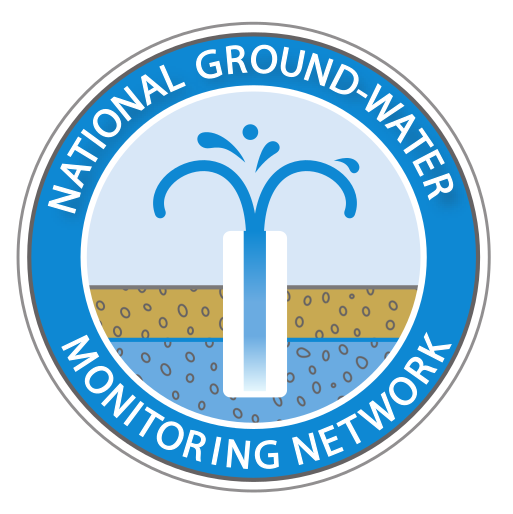Nebraska Department of Environment and Energy
Link to: Nebraska Department of Environmental Quality Water Program
NGWMN Contact:
Ryan Chapman
(402) 471-4227
The Nebraska Department of Environment and Energy (NDEE) is working to become a water-quality data provider to the National Groundwater Monitoring Network (NGWMN). NDEE was created in 1971 as a result of the Nebraska Environmental Protection Act and is responsible for controlling point sources of pollution to Nebraska's waters. NDEQ has sampling results from over 2,800 dedicated groundwater monitoring wells, including data collected as early as 1974. NDEE is actively working towards serving data to the NGWMN Portal.
NDEE provides water-quality data from the High Plains, Glacial, Alluvial, Lower Cretaceous, and Upper Cretaceous Principal aquifers.
NGWMN Projects:
Initial project to become a NGWMN data provider.
NGWMN Presentations:
Site Selection and Classification
Site Selection
Five hundred and twenty-nine wells that are actively sampled by the NRDs are identified for inclusion in the national network. The most basic criteria for selection are that the well is registered in the Groundwater Wells Database maintained by the Nebraska Department of Natural Resources, and that the registration record includes lithologic information and screen interval(s). The secondary criterion for well selection is that it contributes to a relatively even spatial distribution across the state and adequate representation for each of the national aquifers. If more than one well with similar characteristics are in proximity to each other, preference is given to dedicated monitoring wells and wells with a history of five or more samples. Of the 529 wells selected, 51% are irrigation wells, 40% dedicated monitoring wells, 8% domestic wells, and 1% livestock wells. The five national aquifers represented are: High Plains (N100HGHPLN), Glacial (N100GLCIAL), Alluvial (N100ALLUVL), Lower Cretaceous (N300LCRTCS), and Upper Cretaceous
(N300UPCRTCS). Thirty wells are assigned to N9999OTHER; these wells are screened in various paleovalley aquifers that contain unconsolidated sand and gravel of unknown age and are locally important. The High Plains aquifer is subdivided into four local aquifers: Quaternary (110QRNR), Ogallala (121OGLL), Arikaree (122ARIK), and Brule (123BRUL). The Upper Cretaceous aquifer is subdivided into two local aquifers: Niobrara (211NBRR) and Pierre (211PIRR). All the wells assigned to the Lower Cretaceous aquifer are screened in the Dakota aquifer (211DKOT). A local aquifer code is assigned if the screen interval is entirely within that aquifer. If the stratigraphy associated with the screen interval cannot be identified or the screen includes more than one local aquifer, no local aquifer code is assigned.
Site Classification
The three subnetworks are: Background, Suspected/Anticipated Changes, and Known Changes. Natural nitrate concentrations in Nebraska may reach about 2 ppm. A well is assigned to the Background subnetwork if all the nitrate analyses from that well are less than or equal to 2 ppm. Wells in which all the nitrate concentrations are greater than 2 ppm and less than or equal to 3 ppm are assigned to the Suspected/Anticipated Changes subnetwork. All remaining wells are assigned to the Known Changes subnetwork. The distribution of selected wells by subnetwork is: 26% Background, 9% Suspected/Anticipated Changes, and 64% Known Changes.
The two monitoring categories are Trend and Surveillance. A well is assigned to the Trend category if it was sampled at least once per year between 2013 and 2018. All other wells are assigned to the Surveillance category. Some recently installed monitoring wells are sampled at least annually but because their records are relatively short, and their sampling frequency may decrease they are assigned to Surveillance. Of the wells selected, 31% are identified as Trend, and the remaining to Surveillance.
Five years of results is the suggested baseline threshold below which assigning subnetworks and monitoring categories is optional. For the purposes of the Nebraska network, baseline was technically considered achieved if at least one sample was collected between 2013 and 2018. All the wells selected meet this criterion and were assigned to a subnetwork and monitoring category. In practice, all the wells selected had more than one result during this timeframe but some of them had fewer than five results.
Data Collection Techniques
All NDEE Standard Operating Procedures are available at: http://deq.ne.gov/NDEQProg.nsf/SOPView.xsp
Select procedures applicable to the Sampling for the NGWMN are linked below:
Groundwater Sampling--Nitrates, Pesticides, and Inorganics
Quality Assurance/Quality Control (QA/QC) Groundwater Samples
Field Groundwater Quality Measurements--Temperature, pH, Conductivity
Determining Depth to Groundwater and Ground Water Elevation in a Monitoring Well
Field Filtration of Groundwater Samples
Groundwater Sample Preservation and Handling
Chain-of-Custody Procedures for Groundwater Samples
Personal Safety During Groundwater Sampling
Handling Wastes Generated During Groundwater Sampling
Data Management
All NDEE Standard Operating Procedures are available at: http://deq.ne.gov/NDEQProg.nsf/SOPView.xsp
Select procedures applicable to the Data management and Quality assurance are linked below:
Quality Assurance/Quality Control (QA/QC) Groundwater Samples

